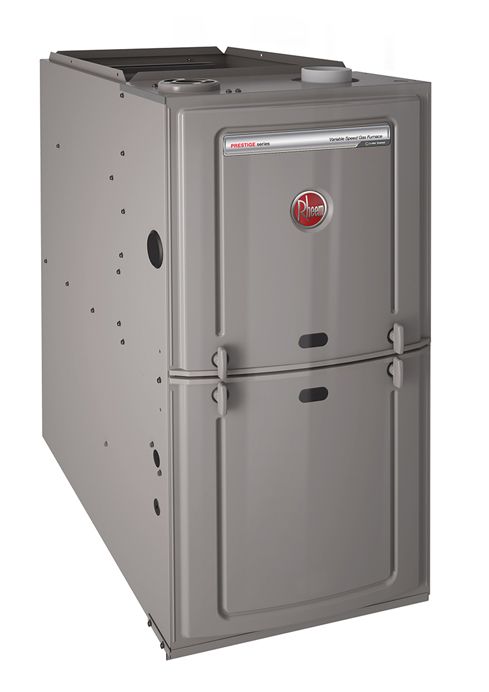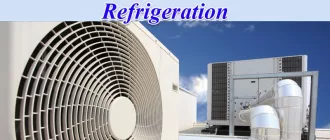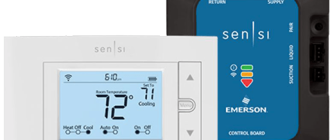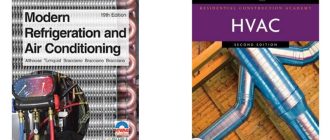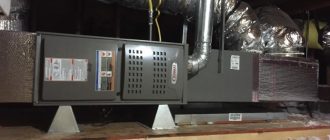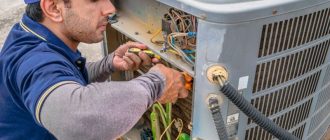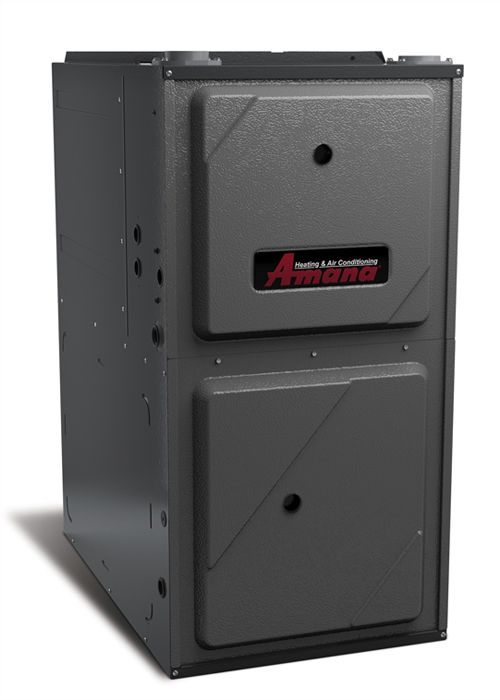
Overview of Furnace Types: Single Stage, Multi Stage and Modulating Furnaces
Furnaces are essential for heating homes and buildings, providing warmth during the cold winter months. There are different types of furnaces available, each offering unique features and benefits. In this overview, we will discuss the three main types of furnaces: single stage, multi stage, and modulating.
Single stage furnaces are the most basic type of furnace. They have only one heating stage, which means that they are either on or off. When the temperature drops below the desired level, the furnace turns on and works at its maximum capacity to heat the space. Once the desired temperature is reached, the furnace turns off. While single stage furnaces are cost-effective and easy to operate, they may not provide the level of comfort and energy efficiency that some homeowners desire.
Multi stage furnaces, on the other hand, have multiple heating stages. This means that they can operate at different capacities, depending on the heating needs of the space. For example, on a milder winter day, the furnace may only operate at a lower stage, using less energy. However, on a colder day, the furnace can switch to a higher stage for more powerful heating. Multi stage furnaces offer increased comfort and energy efficiency compared to single stage furnaces.
Modulating furnaces are the most advanced type of furnace. They can continuously adjust their heating capacity in small increments, providing precise and consistent temperature control. This type of furnace is able to maintain a more stable indoor temperature, resulting in greater comfort and energy savings. Modulating furnaces are typically the most expensive option, but their high efficiency and performance make them a popular choice among homeowners who prioritize comfort and energy savings.
Understanding Furnace Types
In the world of heating technology, there are various types of furnaces available for homeowners to choose from. Each type has its own unique features and benefits, making it important to have a basic overview of the different furnace types before making a decision.
One of the most common furnace types is the single-stage furnace. As the name suggests, this type of furnace operates at a single stage, meaning it has only one level of heat output. While single-stage furnaces are typically more affordable, they may not offer the same level of energy efficiency as other types.
A multi-stage furnace, on the other hand, has multiple stages of heat output. This allows the furnace to adjust its heat output based on the heating needs of the home. Multi-stage furnaces are generally more energy efficient than single-stage furnaces and can provide a more consistent and comfortable level of heat.
Lastly, there are modulating furnaces, which offer the highest level of precision and efficiency. These furnaces are able to continuously adjust their heat output based on the heating demands of the home, providing the most precise level of heat possible. Modulating furnaces are known for their energy efficiency and ability to maintain a consistent temperature throughout the home.
In summary, understanding the different furnace types is crucial when selecting the right furnace for your home. Whether you choose a single-stage, multi-stage, or modulating furnace, each type offers its own set of features and benefits. By considering factors such as energy efficiency, comfort, and cost, you can make an informed decision and ensure that your home remains warm and comfortable throughout the winter months.
Single Stage Furnaces
Single stage furnaces are one of the most common types of furnaces on the market. These furnaces have only one stage of operation, meaning they are either turned on or off. There is no in-between stage, like in multi-stage or modulating furnaces.
The main advantage of single stage furnaces is their simplicity. Since they only have one stage, they are relatively easy to install and operate. Single stage furnaces are also generally less expensive compared to multi-stage or modulating furnaces.
However, single stage furnaces are not as energy efficient as other types of furnaces. They tend to consume more energy because they are always running at full capacity, even if only a small amount of heat is needed. This can result in higher energy bills.
Additionally, single stage furnaces may not provide as consistent or even heating as multi-stage or modulating furnaces. Since they only have one stage, the temperature fluctuation can be more noticeable. There may be times when the furnace produces too much heat, leading to hot spots, or does not produce enough heat, causing cold spots in the living space.
In summary, single stage furnaces are a basic and cost-effective option for heating a home. While they are not as energy efficient or precise as multi-stage or modulating furnaces, they can still provide reliable heat. Single stage furnaces are a good choice for those who prioritize affordability and simplicity in their heating systems.
Multi Stage Furnaces
In the types of furnaces available on the market today, multi stage furnaces are a popular choice for many homeowners. These furnaces offer several advantages over other types, making them a popular option for efficient and effective heating.
Multi stage furnaces, also known as two-stage furnaces, have two different settings or stages: high and low. This allows the furnace to provide a more precise and efficient level of heating, depending on the current temperature needs of the home.
Unlike single stage furnaces, which operate at full capacity whenever they are turned on, multi stage furnaces can adjust their output based on the heating requirements of the space. This means that the furnace doesn’t have to run at full blast all the time, resulting in energy savings and a more consistent temperature throughout the home.
When the thermostat detects that more heat is needed, the furnace will switch to the high stage and provide maximum heating power. However, during milder weather, the furnace can operate in the low stage, producing a lower amount of heat and using less energy. This flexibility allows for better temperature control, increased comfort, and reduced energy consumption.
One of the key benefits of multi stage furnaces is their ability to maintain a more constant temperature in the home. By running at a lower stage most of the time, the furnace can prevent the temperature from fluctuating too much, resulting in a more comfortable living environment.
Overall, multi stage furnaces offer a significant improvement in efficiency and comfort compared to single stage furnaces. While they may have a higher initial cost, the long-term energy savings and improved temperature control make them a worthwhile investment for many homeowners.
If you’re considering a new furnace for your home, it’s worth exploring the benefits of a multi stage furnace. With their ability to modulate heat output based on demand, these furnaces can provide efficient and effective heating throughout your home.
Modulating Furnaces
A modulating furnace is a type of furnace that offers the most precise temperature control and efficiency. It operates by modulating the amount of fuel and air being delivered to the burner, allowing for a continuous range of heat output based on the needs of the home. This type of furnace is often considered the most advanced and efficient option.
Modulating furnaces are designed to provide consistent and comfortable heating throughout the home. They adjust the flame height and heat output in small increments, ensuring that the temperature remains constant without any noticeable fluctuation.
One of the main advantages of a modulating furnace is its ability to adjust its heating levels based on the outdoor temperature and the thermostat settings. This makes it highly adaptable and energy-efficient, as it only uses the necessary fuel and air to maintain the desired temperature.
Another benefit of a modulating furnace is its quiet operation. Since it runs at lower, more precise heat levels, it produces less noise compared to single-stage or multi-stage furnaces. This makes it an ideal choice for homeowners looking for a quiet and comfortable heating system.
However, it is important to note that modulating furnaces tend to be more expensive than other types of furnaces. The advanced technology and precise control come at a higher cost. Nevertheless, many homeowners consider the long-term energy savings and comfort benefits worth the initial investment.
In summary, modulating furnaces offer the highest level of temperature control and efficiency. They adjust the heat output in small increments, providing consistent and comfortable heating throughout the home. Although they may be more expensive, they can offer long-term energy savings and a quieter operation.
Benefits of Single Stage Furnaces
Single stage furnaces are a type of furnace that operates with two distinct settings: “on” and “off”. This means that the furnace is either running at full capacity or not running at all. While single stage furnaces may not offer the same level of control as other types of furnaces, they do provide several benefits.
One of the main advantages of single stage furnaces is their simplicity. With only one stage of operation, these furnaces are generally less complicated and easier to maintain than multi stage or modulating furnaces. This can result in lower maintenance costs and fewer potential issues with the furnace over time.
In addition, single stage furnaces tend to be more affordable than multi stage or modulating furnaces. Because they have fewer components and are less technologically advanced, single stage furnaces are generally priced lower than other furnace types. For homeowners on a budget or those looking for a cost-effective heating solution, a single stage furnace can be a great option.
Furthermore, single stage furnaces are often more energy efficient than older furnace models. While they may not be as efficient as multi stage or modulating furnaces, they still provide a significant improvement in energy savings compared to older, single-stage furnaces. This can result in lower utility bills and a reduced environmental impact.
Overall, single stage furnaces offer a simple and affordable heating solution that can provide efficient and reliable warmth for homes. While they may not offer the same level of control or energy efficiency as other types of furnaces, they do have their own unique benefits. Whether you’re looking to replace an outdated furnace or install a new heating system, single stage furnaces are definitely worth considering.
Benefits of Multi Stage Furnaces
In an overview of furnace types, multi-stage furnaces offer several advantages over single-stage and modulating furnaces. A multi-stage furnace has multiple heat settings, typically two or three, which allow for more precise temperature control.
One of the main benefits of a multi-stage furnace is improved energy efficiency. By operating at a lower stage most of the time, the furnace uses less energy, resulting in lower utility bills. Additionally, the reduced cycling of the furnace can lead to less wear and tear on the system, potentially extending its lifespan.
Multi-stage furnaces also provide improved comfort. With multiple heat settings, the furnace can adjust to meet the heating demands of the home more accurately. This means a more consistent temperature throughout the house and fewer temperature fluctuations.
Furthermore, multi-stage furnaces are typically quieter than single-stage furnaces. The lower heat setting operates at a lower fan speed, reducing noise levels. This can be particularly beneficial for homeowners who value a peaceful and quiet indoor environment.
In summary, multi-stage furnaces offer increased energy efficiency, improved comfort, and reduced noise levels compared to other furnace types. These benefits make them a popular choice among homeowners looking for a reliable and versatile heating solution.
Benefits of Modulating Furnaces
In the overview of furnace types, single-stage and multi-stage furnaces are commonly discussed. However, there is another type of furnace that offers many benefits: the modulating furnace.
A modulating furnace operates differently from single-stage and multi-stage furnaces. Instead of having set stages or levels of heating output, a modulating furnace can continuously adjust its heating output based on the specific needs of your home.
This ability to modulate its heating output provides several advantages compared to other furnace types:
1. Enhanced Comfort: Modulating furnaces can maintain a more consistent and comfortable indoor temperature. They can adjust their heating output as needed to prevent temperature swings and provide even heat distribution throughout your home.
2. Energy Efficiency: Modulating furnaces are highly energy efficient. By continuously adjusting their heating output, they can effectively match the heating demand of your home. This can result in energy savings and lower utility bills compared to single-stage or multi-stage furnaces.
3. Improved Indoor Air Quality: Modulating furnaces often run at lower heating levels for longer periods of time. This allows for better air filtration and circulation, helping to improve indoor air quality by reducing dust, allergens, and other airborne particles.
4. Quieter Operation: Modulating furnaces typically run at lower heating levels, resulting in quieter operation compared to single-stage or multi-stage furnaces. The gradual adjustments in heating output also contribute to reduced noise levels.
5. Longer Lifespan: The ability to modulate heat output helps reduce wear and tear on the furnace components. This can result in a longer lifespan for the furnace, meaning fewer repairs and replacements over time.
Overall, modulating furnaces offer significant benefits in terms of comfort, energy efficiency, indoor air quality, noise levels, and longevity. If you’re looking for a furnace that can provide precise heating control and optimal performance, a modulating furnace may be the ideal choice for your home.
Drawbacks of Single Stage Furnaces
While single stage furnaces are the most basic type of furnace, they do have some drawbacks compared to other types, such as multi stage and modulating furnaces. Here are a few drawbacks of single stage furnaces:
- Limited Comfort Control: Single stage furnaces have only one stage of heating output, meaning they can only operate at full capacity. This can result in temperature swings in your home, as the furnace turns on and off to maintain the set temperature.
- Inefficient Operation: Single stage furnaces typically operate at maximum capacity, even when less heat is required. This can result in wasted energy and higher utility bills.
- Noise: Single stage furnaces can be noisier compared to multi stage and modulating furnaces. This is because the furnace operates at full capacity each time it turns on, creating more noise.
- Less Even Heating: Since single stage furnaces only have one output stage, they may struggle to evenly distribute heat throughout your home. This can result in certain areas being warmer or colder than others.
While single stage furnaces are more affordable upfront, their drawbacks in terms of comfort control, efficiency, noise levels, and even heating make them less desirable compared to multi stage and modulating furnaces. It’s important to consider your heating needs and preferences when choosing the right furnace for your home.
Drawbacks of Multi Stage Furnaces
While multi-stage furnaces offer several advantages over single-stage furnaces, they also have some drawbacks that homeowners should consider before making a purchasing decision. Here are some of the drawbacks of multi-stage furnaces:
| Higher initial cost: | Multi-stage furnaces tend to be more expensive upfront compared to single-stage furnaces. The additional features and technology required for multi-stage operation contribute to the higher price tag. |
| Complexity: | Multi-stage furnaces are more complex in terms of their design and operation. They have more components and sensors that need to work together seamlessly. This complexity can make installation, maintenance, and repairs more challenging and potentially more expensive. |
| Potential overkill: | In certain situations, a multi-stage furnace may be overkill and unnecessary. If you live in an area with a milder climate or have a well-insulated home, a single-stage furnace may provide sufficient heating without the need for the extra stages and variable heating output. |
| Compatibility: | Not all homes are compatible with multi-stage furnaces. Older homes or homes with outdated HVAC systems may require significant modifications or upgrades to accommodate a multi-stage furnace. This can add to the overall cost and complexity of the installation process. |
| Advanced thermostat required: | In order to fully utilize the benefits of a multi-stage furnace, an advanced thermostat that supports multi-stage operation is required. This can be an additional cost if your current thermostat is not compatible. |
Despite these drawbacks, multi-stage furnaces are still a popular choice for many homeowners due to their energy efficiency, comfort benefits, and heating versatility. It’s important to weigh the pros and cons of different furnace types and consider your specific heating needs before making a final decision.
Drawbacks of Modulating Furnaces
Modulating furnaces, while offering many benefits, do have some drawbacks compared to other types of furnaces. Here are a few drawbacks to consider:
| 1. | Cost: | Modulating furnaces tend to be more expensive upfront compared to single-stage or multi-stage furnaces. The advanced technology and precision control systems required in modulating furnaces contribute to their higher price. |
| 2. | Complexity: | The complexity of modulating furnaces can make them more difficult to install and maintain. These furnaces may require additional setup and calibration to ensure optimal performance. Additionally, if the furnace experiences any issues, troubleshooting and repairs may be more involved. |
| 3. | Compatibility: | Modulating furnaces may not be compatible with all HVAC systems or homes. These furnaces require certain equipment and infrastructure to work effectively, such as variable speed blowers and compatible thermostats. It’s important to consult with an HVAC professional to determine if a modulating furnace is suitable for your specific needs. |
| 4. | Noise: | Modulating furnaces can produce more noise compared to other types of furnaces, especially during the modulation process when the furnace adjusts its heat output continuously. The variable speed blower and gas valve operation can contribute to the increased noise level, which may be a concern for homeowners seeking quieter operation. |
| 5. | Technology Dependency: | Modulating furnaces rely heavily on advanced technology to modulate the heat output accurately. If any of these technological components fail or malfunction, it can affect the furnace’s performance and efficiency. Regular maintenance and potential repairs may be necessary to keep the furnace running smoothly. |
Choosing the Right Furnace for Your Home
When it comes to furnaces, there are several types to consider: single stage, multi stage, and modulating furnaces. Each type offers its own advantages and disadvantages, so it’s important to choose the right one for your home.
A single stage furnace is the most basic type. It operates at only one speed, either on or off, which means it’s either running at full capacity or not running at all. While single stage furnaces tend to be less expensive upfront, they can be less efficient and may result in temperature fluctuations in your home.
A multi stage furnace, on the other hand, has multiple settings or stages. This means it can operate at different levels of heating output, depending on the demand. Multi stage furnaces are generally more efficient than single stage furnaces, as they can provide more consistent temperatures and better energy savings.
A modulating furnace is the most advanced type. It can adjust its heating output in small increments, allowing for precise temperature control and maximum energy efficiency. Modulating furnaces are typically more expensive upfront, but they offer the highest level of comfort and energy savings in the long run.
So, which type of furnace is right for you? It depends on your specific needs, budget, and preferences. If you’re looking for a more affordable option and don’t mind temperature fluctuations, a single stage furnace might be suitable. However, if you value consistent temperatures and energy efficiency, a multi stage or modulating furnace could be a better choice.
Ultimately, the key is to consider your home’s heating requirements, your comfort preferences, and your long-term energy savings goals in order to make an informed decision on the right type of furnace for your home.
Cost Considerations for Different Furnace Types
When it comes to furnaces, there are three main types to consider: single stage, multi-stage, and modulating. Each type has its own unique features and advantages, but it’s important to also consider the cost implications when making your decision.
A single stage furnace is the most basic option, and typically the least expensive. It operates at full capacity whenever it’s turned on, meaning it’s either running at maximum heat or turned off completely. While the upfront cost of a single stage furnace may be lower, it can result in higher energy bills since it’s not able to adjust its output based on the temperature needs of your home. This type of furnace may be a good option for budget-conscious homeowners who prioritize initial cost over long-term energy savings.
A multi-stage furnace, on the other hand, offers two or more heat output levels to provide more precise temperature control. This can result in more even heating, increased comfort, and potentially lower energy bills. While multi-stage furnaces have a higher upfront cost compared to single stage furnaces, they can provide greater energy efficiency and cost savings in the long run.
Finally, modulating furnaces offer the most advanced technology and the highest level of heating precision. They continuously adjust their heat output based on the current temperature needs of your home, providing the most consistent and efficient heating. While modulating furnaces have the highest upfront cost, they can provide the greatest energy savings over time, potentially offsetting the initial investment.
It’s important to consider your budget, heating needs, and long-term energy savings when choosing a furnace type. While single stage furnaces may be more affordable upfront, multi-stage and modulating furnaces can offer greater energy efficiency and cost savings in the long run. Consulting with a heating professional can help you determine the best furnace type for your needs and budget.
| Single Stage | Low | Lower | Lower |
| Multi-Stage | Medium | Medium | Medium |
| Modulating | High | Higher | Higher |
Energy Efficiency Comparison
When it comes to the energy efficiency of furnaces, it is important to understand the differences between single-stage, multi-stage, and modulating furnaces. An overview of these three types of furnaces reveals distinct variations in their energy-saving capabilities.
A single-stage furnace is the most basic type, operating on one stage at full capacity. While it can effectively heat your home, it is not as energy efficient as the other two options. This is because it is always running at its highest capacity, which means it may consume more energy than necessary to maintain the desired temperature.
In contrast, multi-stage furnaces have two or more heat settings, allowing them to operate at different capacities. This means that they can adjust their output based on the heating needs of your home. By running at a lower capacity for longer periods, multi-stage furnaces can use less energy while still providing the desired level of comfort.
Modulating furnaces, on the other hand, offer the highest level of energy efficiency. These furnaces have a continuous range of heat settings and can adjust their output very precisely. By constantly making small adjustments based on the current temperature, modulating furnaces can operate at the optimal efficiency level, resulting in significant energy savings.
In conclusion, while single-stage furnaces may be the most affordable option upfront, they are not as energy efficient as multi-stage or modulating furnaces. If you are looking to maximize your energy savings and reduce your carbon footprint, consider investing in a multi-stage or modulating furnace, which can provide greater control over energy usage and result in long-term cost savings.
Maintenance and Service Requirements
Proper maintenance and regular servicing are important for all types of furnaces, including single stage, multi stage, and modulating furnaces. By following the recommended maintenance schedule, homeowners can ensure that their furnaces are running efficiently and safely.
For all furnace types, it is important to regularly clean or replace the air filter. This helps maintain proper airflow and prevents the furnace from becoming clogged with dirt and debris. Additionally, homeowners should check and clean the furnace’s blower motor and fan assembly to ensure they are operating smoothly.
Multi stage and modulating furnaces may require additional maintenance compared to single stage furnaces. These more advanced furnace types typically have more intricate components, such as multiple heat exchangers and variable speed blowers. It is important to have these parts inspected and serviced regularly to ensure they are functioning properly.
Furthermore, homeowners should consider scheduling annual professional maintenance for their furnaces. A qualified technician can perform a thorough inspection of the furnace, detecting any potential issues before they become major problems. Professional maintenance also includes tasks such as lubricating moving parts, cleaning the burners, and testing the ignition system.
In conclusion, while the maintenance requirements for different types of furnaces may vary, regular upkeep is necessary for all furnace types. Homeowners should follow the manufacturer’s recommendations and seek professional service to ensure a safe and efficient operation of their furnaces.
Q&A:
What is a single stage furnace?
A single stage furnace is a furnace that only has one setting for heat output. It operates at full capacity every time it turns on.
What is a multi stage furnace?
A multi stage furnace is a furnace that has multiple settings for heat output. It can operate at different capacities depending on the temperature needs of the house.
What are the benefits of a multi stage furnace?
A multi stage furnace offers more precise control over the heating process, resulting in increased comfort and energy savings. It can also operate at a lower capacity for longer periods of time, which can reduce noise and temperature fluctuations.
What is a modulating furnace?
A modulating furnace is the most advanced type of furnace. It can continuously adjust its heat output in small increments to maintain a consistent temperature throughout the house. This provides the highest level of comfort and energy efficiency.
What factors should I consider when choosing a furnace type?
When choosing a furnace type, you should consider factors such as the climate in your area, the size of your home, and your budget. It’s also important to take into account your comfort preferences and energy efficiency goals.

